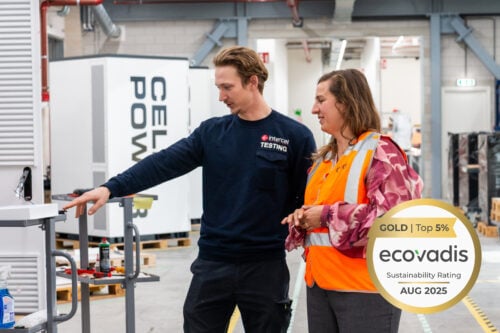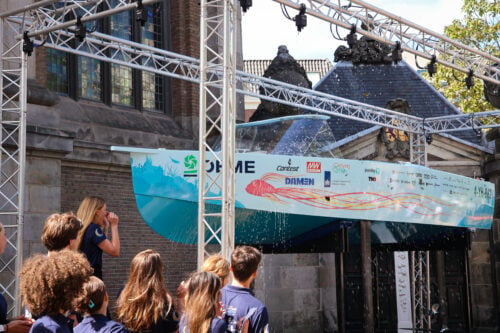The energy transition is in full swing. But what exactly is the energy transition? What does this process look like in practice, what does it mean for you, and how do you participate as a company or individual? Intercel will gladly tell you on this page.
Energy transition meaning
A concise definition of the term energy transition is the transition to a new energy system. Instead of the current system, which uses fossil energy sources such as gas, coal and oil, we are moving to a system that runs on clean and renewable energy sources such as sun, wind and water. Concrete examples of energy transition are the closing down of coal-fired power plants and the increasing number of solar panels on roofs.
Why energy transition?
Now that we have explained the definition of energy transition, you may wonder why it is needed. The main purpose of the energy transition is to stop climate change. Fossil energy sources, which now make up 95% of our energy supply, produce a lot of CO2 emissions. This greenhouse gas is causing the earth’s temperature to rise. To limit this warming to a maximum of 1.5 ℃, a switch must be made to energy sources that do not emit CO2. Fossil energy sources will also run out at some point, and burning them will also emit other harmful substances, such as particulates and nitrogen.
Energy transition in the Netherlands
Energy transition in the Netherlands follows the goals of the international Climate Accord, which was concluded in Paris in 2015. The goal of this agreement is to reduce CO2 emissions. By 2030, this must be reduced by 49% compared to 1990. In 2050 we must emit 95% less greenhouse gases in the Netherlands. The government is taking various measures to achieve these goals. The government is, for example, investing in the electrification of industry and transport, and in increasing the share of sustainably generated energy. In addition, hydrogen may play an important role in the energy transition.
What does energy transition mean for businesses?
All sectors are affected by energy transition, including businesses and industry. For example, there will be a CO2 tax for industry to encourage the transition to clean energy. Companies will be encouraged to electrify by means of schemes and subsidies. For example, by converting or purchasing electric machines instead of fossil energy ones. The electrification of the vehicle fleet is another example of how companies can contribute to energy transition.
Examples of energy transition
In addition to the aforementioned examples of energy transition, one can think of the rise of electric driving and the construction of wind farms at sea. Developments in the area of hydrogen are another example of energy transition. For some applications, including heavy transport and certain industrial processes, there is not yet an electrical solution and the search is on for a sustainable gas. Sustainably produced hydrogen, or green hydrogen, is a promising option.
Energy transition costs
Energy transition involves high costs. For example, an amount of 1,000 billion is sometimes mentioned up to 2050. A better estimate is that the transition will cost between 1% and 3% of GDP, or about 14 billion per year. This is a lot of money, and everyone will have to contribute to it in one way or another. But the energy transition also brings great opportunities. The transition to green energy creates jobs, innovation and ultimately cheaper energy. And let’s not forget a cleaner world.
How is Intercel contributing to the energy transition?
Intercel is contributing to the energy transition by supplying customised batteries for a wide range of applications. For example, our batteries enable construction machines and vehicles to be converted from fossil to electric power. We distinguish ourselves by the way we design and build batteries: we build batteries at cell level instead of module level (cell to pack). This enables us to electrify machines that operate in extreme conditions. Where other suppliers do not dare to customise a battery for a foundation machine, we do.Contact us now to discuss the possibilities!



